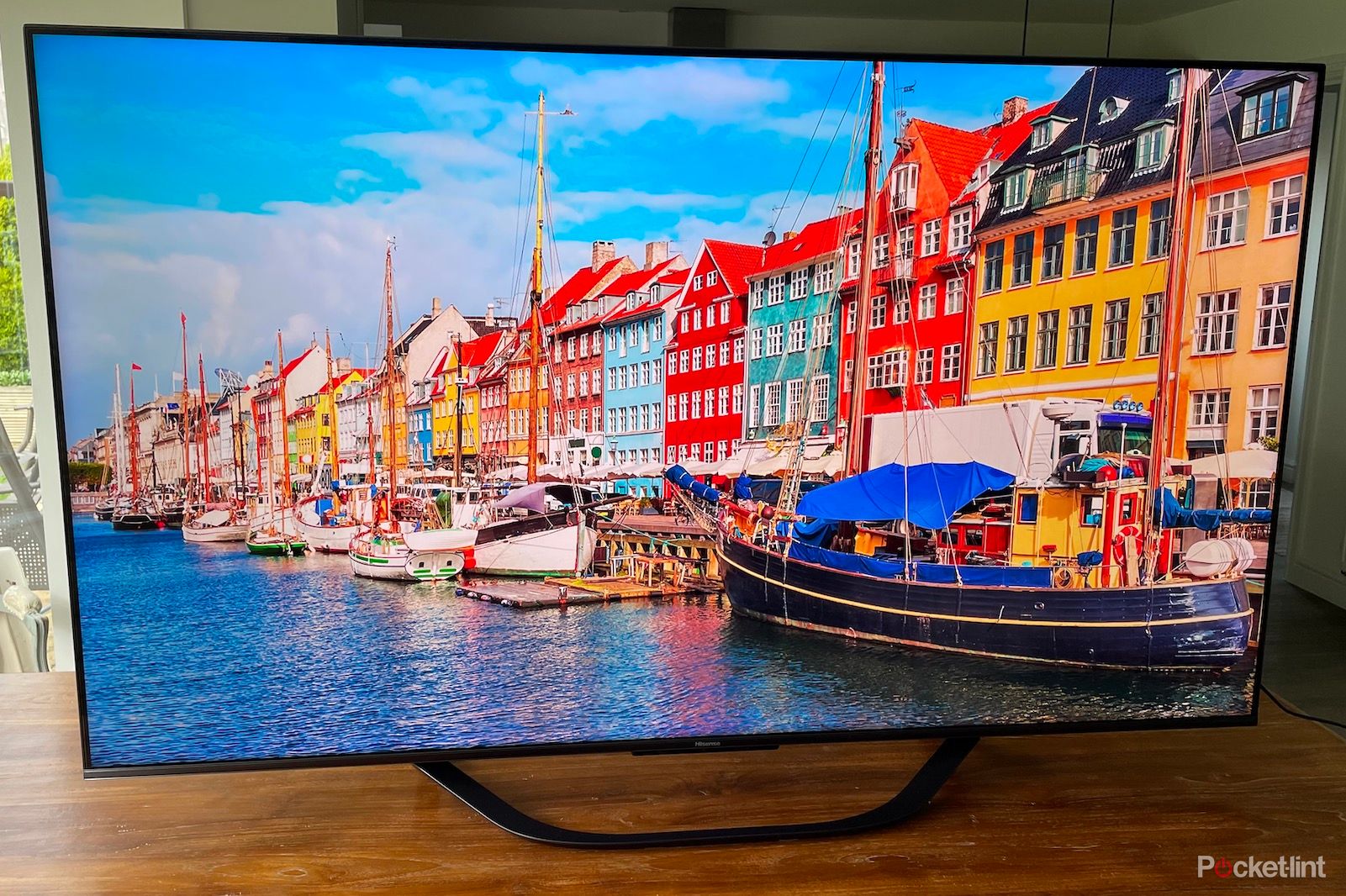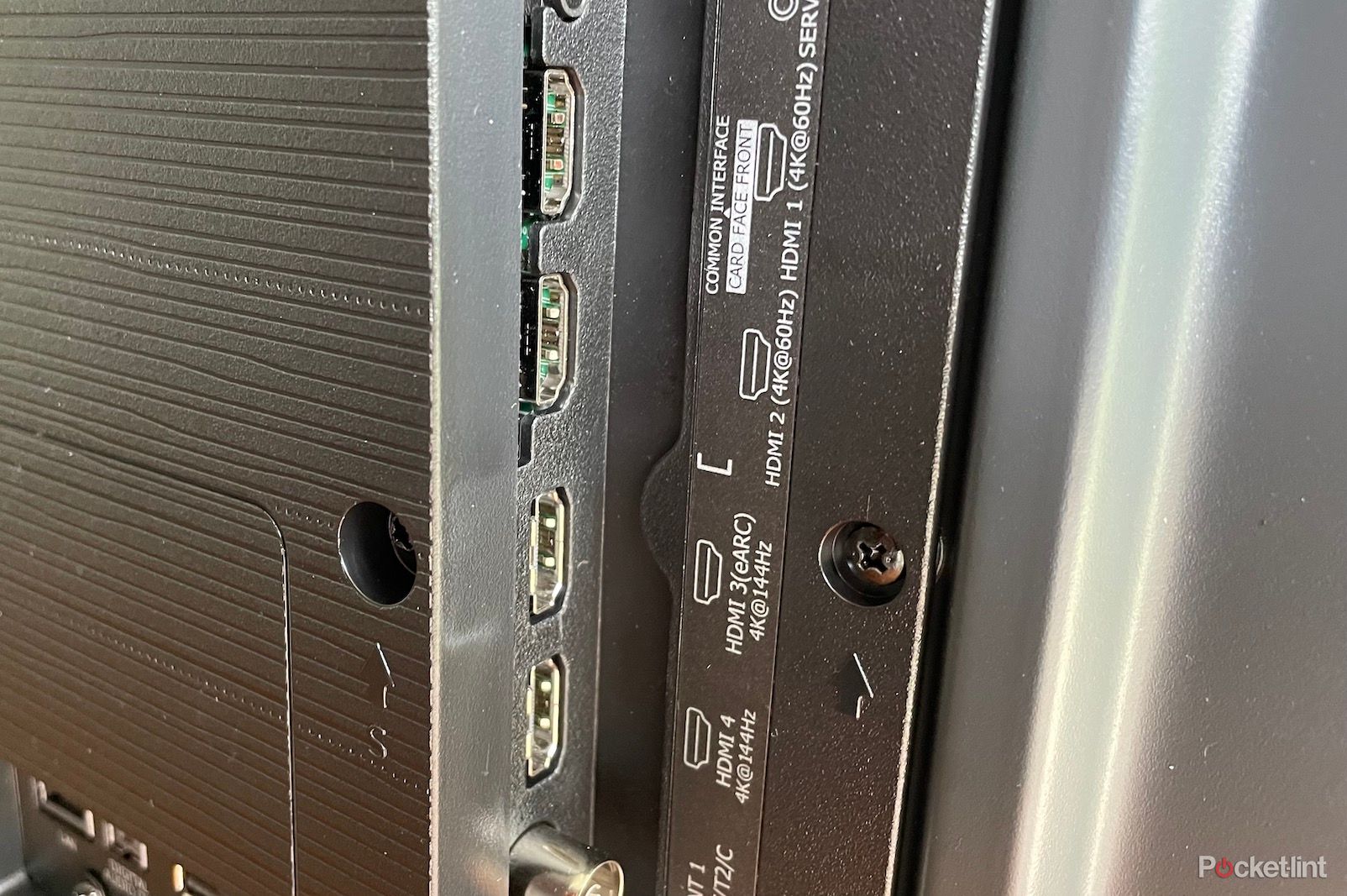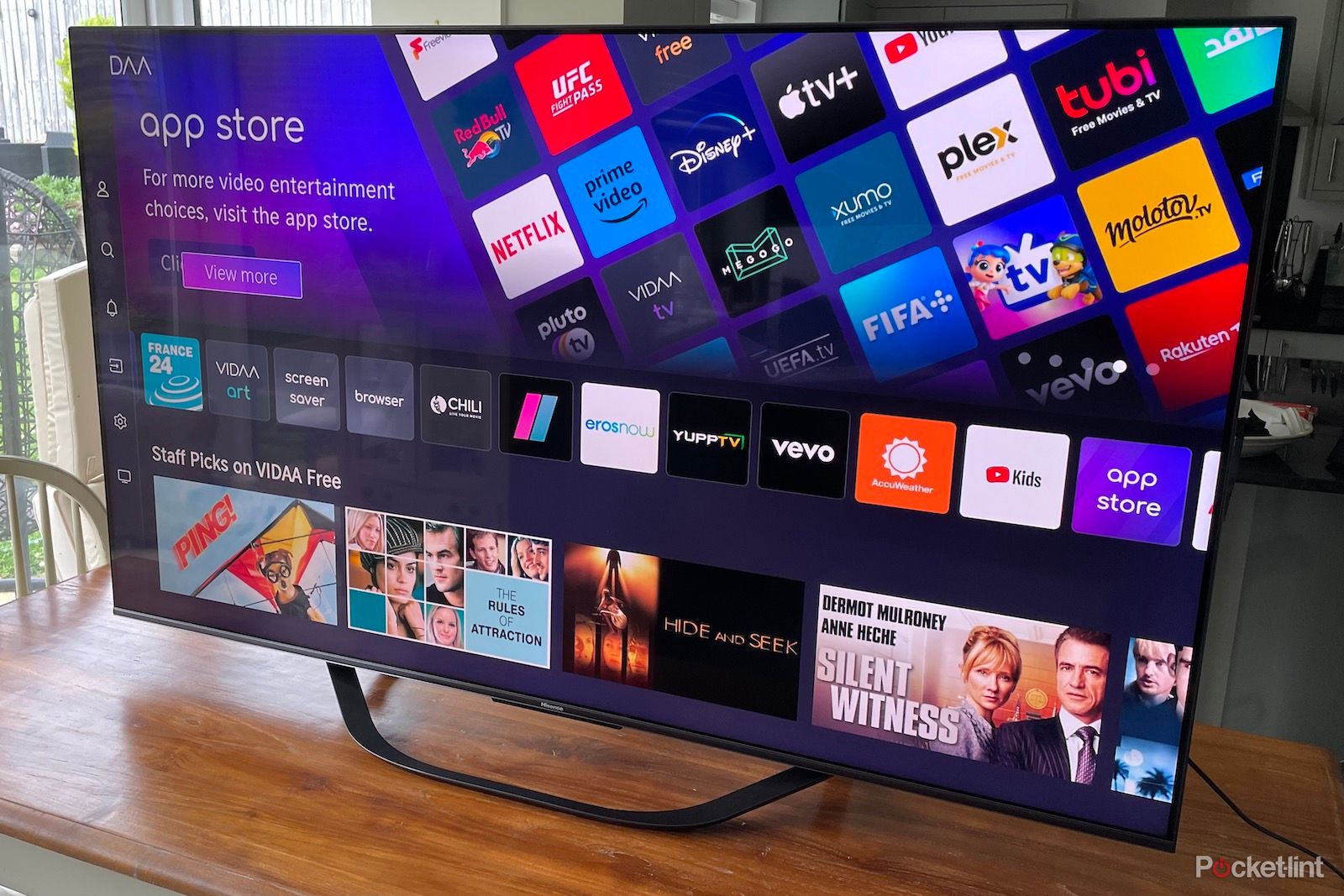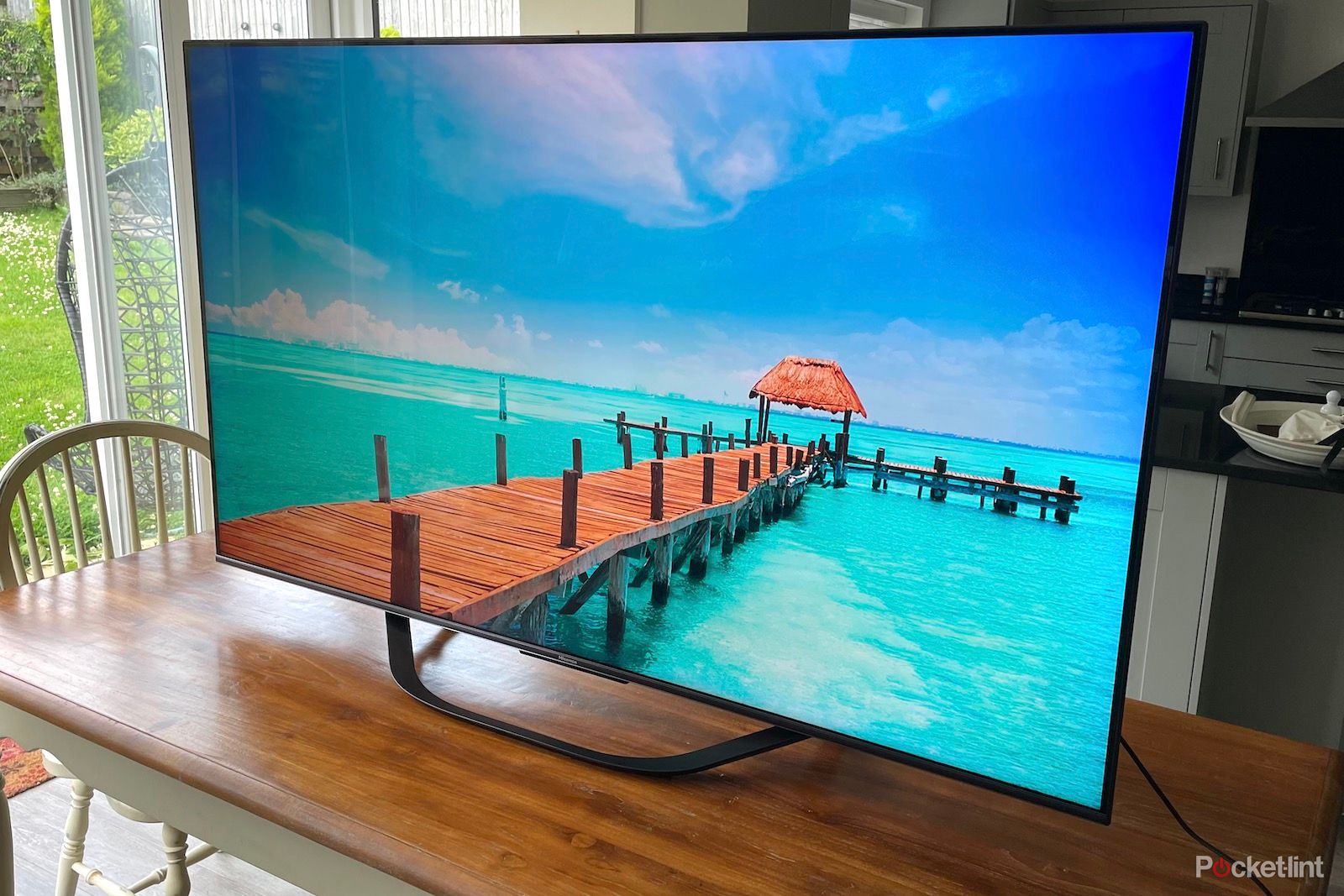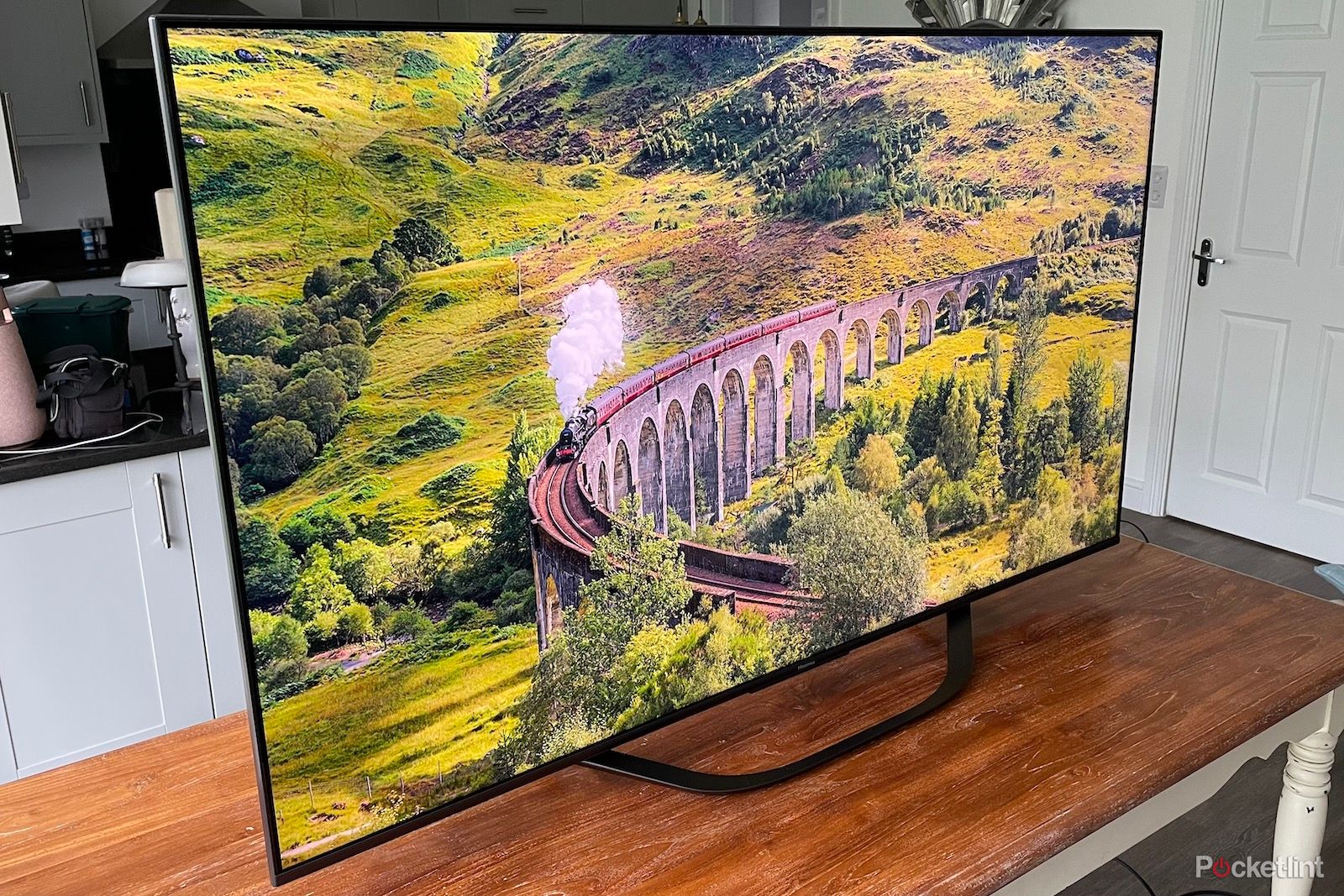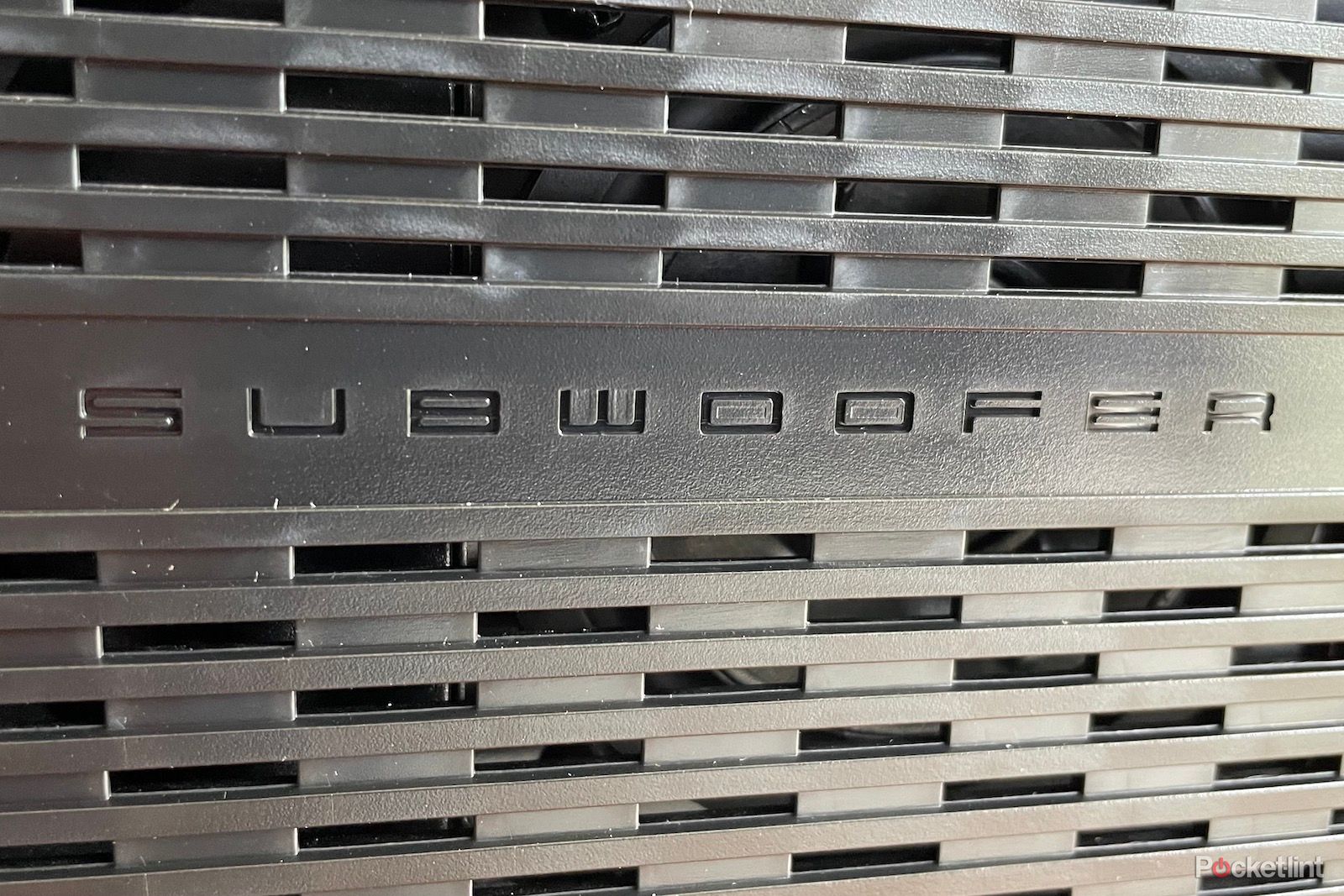The extra I see of Mini LED technology, the extra satisfied I’m that it is the LCD TV know-how of the longer term. Final yr, although, Hisense had the unlucky privilege of being the one model that bucked the widely constructive Mini LED development by creating one thing of a territorial battleground when it got here to image high quality.
Whereas consumers within the US had been handled to a (well-reviewed, by the way in which) VA panel in its flagship U8 Mini LED mannequin, UK consumers needed to put up with a lesser, low-contrast IPS panel within the UK model, leading to a sub-par image efficiency.
Whereas this proved that Mini LED know-how is not sufficient to ensure glorious image high quality mechanically, the much-improved efforts of the brand new 65U7KQ Mini LED TV reviewed right here means that Hisense has opted to study from earlier errors slightly than repeat them.
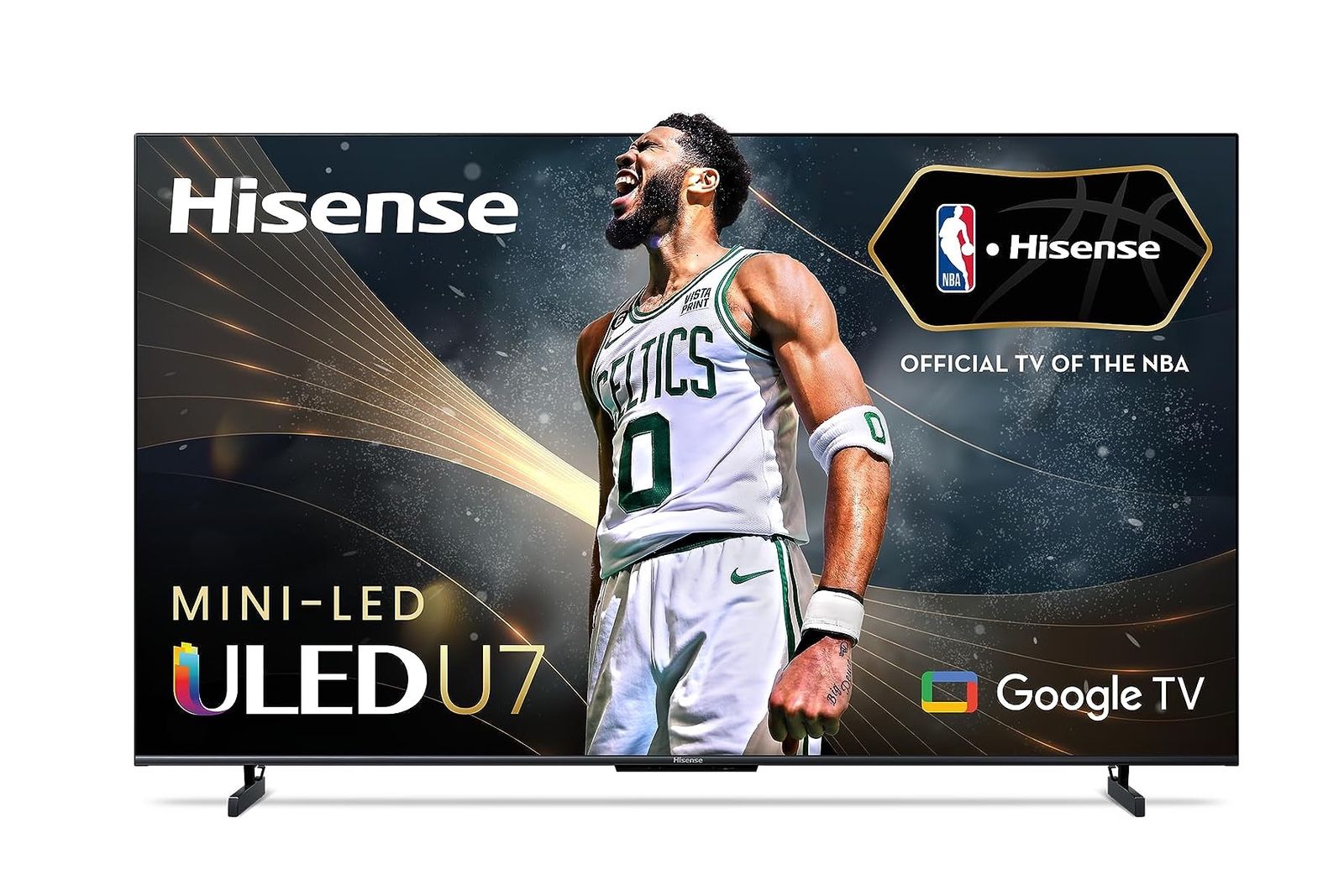
Hisense/ Pocket-lint
Hisense U7K
Regardless of solely belonging to the mid-tier of a brand new triple-layer providing of Mini LED TVs, the Hisense U7K improves massively on its dearer predecessor. Its aggressive pricing brings Mini LED into the attain of a a lot wider viewers, too.
- Critically aggressive pricing
- Good all-round image high quality
- Room-filling sound
- Some backlight clouding
- Some unusual color smudging
- It is up in opposition to some robust competitors
Design
The Hisense 65U7KQ’s design is a blended bag. On the upside, the body across the display is fairly slender, and the curved bar-style stand you get with the UK mannequin (different territories get extra basic-looking toes) is enticing and distinctive. The UK stand design additionally means you may place the TV on a comparatively slender piece of furnishings, which is at all times welcome when display sizes get bigger.
Construct high quality is barely honest, although, with the display feeling somewhat light-weight and plasticky whenever you’re attaching it to its stand. It is fairly chunky around the again by at the moment’s requirements, too – although as most sane people will spend the overwhelming majority of their time wanting on the entrance of their TVs, this protruding rear is barely one thing to be thought of by these hoping to wall mount their TV.
The 65U7KQ ships with a distant that is arguably extra fashionable and premium than the TV. Its gleaming silver end appears high-end, and its lengthy form and sharply outlined buttons make it straightforward and cozy to carry and use.
Options
Till just lately, I would have stated the 65U7KQ’s Mini LED display know-how was its headline function. This has modified, although, because of the massive value minimize Hisense has simply utilized to its new mid-range Mini LED TV.
The value within the US, specifically, is unimaginable, and what was a $1,050/£1,499 TV now sells for simply $730/£999. That will be low cost for any 65-inch TV, by no means thoughts one which’s utilizing Mini LED know-how, however essentially the most important factor in regards to the new value is that it makes the 65U7KQ even cheaper than the TCL 65C845K Mini LED TV I used to be so impressed by just lately (most intently matched by the TCL QM8 within the US).
If that is the primary time you have heard of Mini LED know-how, the important thing level behind it’s to enhance gentle management and brightness by illuminating LCD TVs utilizing a lot larger numbers of a lot smaller LEDs. The sunshine management level is additional bolstered on the 65U7KQ by native dimming know-how, the place the mini LEDs are divided into individually controllable zones able to outputting totally different quantities of sunshine for each body of the image. The outcome, hopefully, is extra distinction and dynamic vary the place it needs to be.
Pocket-lint
To my rely, the 65U7KQ has 384 dimming zones – a a lot larger quantity than you have any proper to anticipate of a 65-inch TV costing lower than $750/£1,000.
The variety of dimming zones a TV carries, although, is barely a part of the story. How cleverly these zones are utilized to incoming image indicators is simply as necessary. So it is good to search out Hisense making use of a brand new AI-infused Hello-View processing system to the 65U7KQ, regardless of this set solely sitting in the course of the model’s three new Mini LED sequence (under the flagship U8KQs).
This processor does not simply deal with the native dimming system, in fact. It will additionally contribute to the 65U7KQ’s upscaling of sub-4K pictures, color and particularly (given some earlier Hisense points on this space) movement processing.
The 65U7KQ claims to be able to delivering greater than a billion separate color shades, because of a mix of its newest processor and a Quantum Dot color system slightly than a standard LCD RGB filter strategy.
The set’s exceptional worth proposition continues with the variety of sources it might probably assist. For starters, two of its 4 HDMI ports can deal with 4K/120Hz images from the latest premium game consoles and PCs (or the 144Hz feeds potential with some PC titles), together with variable refresh charges.
Pocket-lint
The VRR assist consists of the AMD Freesync Premium format in addition to the generic HDMI format, and as I virtually anticipate as customary from any remotely bold TV lately, the HDMIs additionally assist the auto low latency mode (ALLM) switching system for activating the TV’s fastest-reacting recreation mode when a recreation supply is detected.
I measured the time the 65U7KQ takes to render graphics in its Recreation preset at simply over 13ms. That is not fairly the quickest response time on this yr’s TV world, however it’s not far off.
Hisense’s newest working system introduces a devoted Recreation menu system, which pops up mechanically, rather than the common set-up menus, when the TV is enjoying a recreation supply. This features a first rate set of game-specific options, akin to the choice to extend the brightness of darkish image areas and, impressively, assist for the super-wide side ratios accessible with some PC titles.
The 65U7KQ continues to impress with its HDR support, which extends to each the superior Dolby Vision and HDR10+ codecs, in addition to the fundamental HDR10 and HLG codecs. In reality, because of an onboard gentle sensor, the 65U7KG helps the Dolby Imaginative and prescient IQ and HDR10+ Adaptive programs, the place the premium HDR codecs can adapt their output relying on the quantity of ambient gentle the TV is working in.
Pocket-lint
Lastly, the truth that the 65U7KQ makes use of Hisense’s personal VIDAA sensible TV platform would as soon as have been an issue. Over the previous couple of years, although, Hisense has improved the presentation, stability and, most necessary of all, quantity of content material VIDAA carries to the purpose the place, whereas it may not be the slickest-looking system on the town, it is now an asset slightly than a hindrance for Hisense TVs.
Nevertheless, it is price noting that within the US, the 65U7KQ makes use of Google TV slightly than VIDAA. Contemplating my expertise with that system on Sony TVs and elsewhere, I would be assured in suggesting that it is an important – and probably higher – different.
Image efficiency
Although it sits in a decrease strata of Hisense’s 2023 TV vary than the model’s sole 2022 Mini LED TV, it is immediately apparent that the 65U7KQ affords an entire different world of image high quality in contrast with its predecessor.
The most important purpose for this seems to be Hisense’s swap for the 65U7KQ to a VA fashion of panel slightly than the IPS panel kind utilized in its predecessor. This issues as a result of, whereas IPS panels can assist wider efficient viewing angles than VA ones, they battle to manage gentle, inflicting milky-looking darkish scenes and extreme backlight clouding issues.
The 65U7KQ, by comparability, delivers a number of the greatest black ranges I’ve seen on an LCD TV. By no means thoughts a 65-inch mini LED LCD TV now promoting as cheaply as this. Fade to blacks can obtain virtually OLED-like ranges of purity and consistency, in actual fact.
The 65U7KQ’s new-found black-level abilities are achieved naturally sufficient, too, by the newest native dimming system to make sure that darkish components of the image nonetheless include loads of delicate shadow element.
Hisense U7K
- Model
- Hisense
- Show Dimension
- 55, 65 & 75 inches
- Dimensions
- 145 x 89 x 31cm
- Working System
- VIDAA Good OS
- Show Kind
- Mini LED
- Show Decision
- 4K (3840 x 2160)
- Connectivity
- 4 x HDMI inputs (2 x HDMI 2.1), Wi-Fi, Bluetooth, Apple Airplay 2
- Refresh price
- 144Hz
- Weight
- 29kg
- Audio system
- 2.1ch
- Peak Brightness
- 1000 nits
- Response Time
- 13ms
Becoming a member of the 65U7KQ’s a lot darker black ranges tremendously diminished backlight blooming issues that troubled its predecessor. The difficulty hasn’t utterly gone, although. Very excessive content material – stuff like road lights or a full moon shining in opposition to an inky black sky – could cause some faint traces of extraneous gentle to unfold out past the sides of the intense object.
This blooming can prolong farther from the intense object in such excessive circumstances, too – moreso than I might need anticipated from 384 dimming zones. Crucially, although, in contrast to with its predecessor, in addition to this blooming cropping up much less often, it additionally seems way more faintly, creating extra of a normal mistiness slightly than an outlined and distracting blooming space.
Pocket-lint
The 65U7KQ’s deeper, extra managed black ranges additionally contribute to sense of distinction. Shiny HDR objects that seem in opposition to darkish backdrops are typically barely dimmed to try to restrict the potential for backlight blooming, however this actually is a fairly mild impact that is a lot much less apparent than it’s on Samsung’s Mini LED TVs, just like the X95L.
I ought to stress, although, that one of many causes the occasional slight dimming of stand-out vivid objects on the 65U7KQ is much less noticeable than it’s on Samsung’s mini LED units is that Samsung’s TVs are a lot brighter. In reality, the 65U7KQ’s peak brightness of just below 700 nits makes it one of many least vivid mini LED TVs I’ve examined.
This inevitably limits its influence with HDR footage and could also be a consideration if you happen to’re on the lookout for a TV to enter a sometimes very vivid room. The black ranges and lightweight management are ok, although, that I did not really feel the display lacked punch, particularly within the context of its value.
The 65U7KQ’s colors are a lot improved over its predecessor, too – not least as a result of the improved backlighting means color tones seem with way more constant gentle behind them, giving them extra uniformity throughout the display. Their tones are typically richer as nicely, and for more often than not, the brand new processor helps to mix the vibrancy with delicate shading and mixing.
Pocket-lint
Colors aren’t fairly as closely saturated, even within the 65U7KQ’s punchiest image modes, as these supplied by key Mini LED rivals from Samsung, Sony and TCL. There’s, although, somewhat extra self-discipline in regards to the 65U7KQ’s color strategy than you get with TCL C845K fashions. A minimum of if you happen to follow the TCL’s out-of-the-box presets.
The 65U7KQ’s image sometimes appears crisp and detailed with native 4K footage, and whereas its upscaling of HD sources is not fairly as pure or refined-looking as it’s with premium units from the likes of Samsung and Sony, it is ok to not change into a distraction.
Hisense’s engineers have helped the 65U7KQ’s sharpness out, too, by enhancing its movement dealing with. Movie sources working at 24 frames a second, specifically, look much less juddery/stuttery and blurry than they did in 2022, and the ‘low’ setting of the movement processing system does not throw up too many processing negative effects.
There are a few closing image niggles to cowl, although. First, color and distinction drop off a bit if it’s important to watch the TV from a lot of an angle – the draw back to switching to a VA panel. Additionally, oddly, background areas of the image, notably in low-lit areas in direction of the picture’s edges, can typically look unusually unrefined – virtually smudged. No setting tweaks actually deal with this concern, both – although luckily, it does not have an effect on ‘focus’ components of the picture and solely seems comparatively hardly ever.
Audio efficiency
Hisense has partnered the 65U7KQ’s largely profitable footage with essentially the most flat-out loud sound I’ve heard from a sub-£1,000 TV. The 40W, 2.1-channel set-up does not function a type of built-in soundbar preparations which have featured in Hisense’s flagship TVs lately however nonetheless manages to fill your room and problem your ears even when solely working at round half of its most quantity.
Having a lot, primarily extra, quantity at its disposal might be seen as a bit pointless, I suppose, however I would argue that utilizing audio system with a lot headroom helps the TV ship loads of clear, harshness-free detailing. It means it is ready to shift by loads of gears as large motion scenes increase and develop and produce a pleasant, open-sounding mid-range.
The spectacular extent to which the sound is solid past the TV’s bodily body helps it create a decently convincing sense of area with Dolby Atmos soundtracks, too, into which results are positioned – nearly – with cheap precision.
Pocket-lint
The devoted subwoofer, in the meantime, makes its presence identified extra readily, successfully and deeply than the bass efforts of the overwhelming majority of built-in TV audio programs. It’s totally spectacular certainly.
That stated, the 65U7KQ’s extra aggressive strategy to sound can change into somewhat undisciplined and strained through the densest film soundtrack moments, and the subwoofer’s sometimes spectacular bass efforts can begin to distort throughout Hollywood’s most extravagant low-frequency drops. Such in-extremis niggles are fairly straightforward to forgive, although, within the context of how spectacular this startlingly inexpensive TV sounds for more often than not.
Verdict
With its newest Mini LED providing, the 65U7KQ sees Hisense taking an enormous stride in the appropriate course. Image high quality is way improved over its Mini LED predecessor, and sound high quality is among the many strongest I’ve heard from any TV – by no means thoughts a 65-inch premium-tech LCD mannequin coming on this low cost.
Slashing its preliminary launch value to get this big-screen TV into three figures might nicely have have damage Hisense’s margins, however the truth that the 65U7KQ is now even cheaper than TCL’s dazzling 65C845K Mini LED rival has made it massively extra aggressive – and compelling – than it might need been earlier than.
Trending Merchandise

Cooler Master MasterBox Q300L Micro-ATX Tower with Magnetic Design Dust Filter, Transparent Acrylic Side Panel, Adjustable I/O & Fully Ventilated Airflow, Black (MCB-Q300L-KANN-S00)

ASUS TUF Gaming GT301 ZAKU II Edition ATX mid-Tower Compact case with Tempered Glass Side Panel, Honeycomb Front Panel, 120mm Aura Addressable RGB Fan, Headphone Hanger,360mm Radiator, Gundam Edition

ASUS TUF Gaming GT501 Mid-Tower Computer Case for up to EATX Motherboards with USB 3.0 Front Panel Cases GT501/GRY/WITH Handle

be quiet! Pure Base 500DX ATX Mid Tower PC case | ARGB | 3 Pre-Installed Pure Wings 2 Fans | Tempered Glass Window | Black | BGW37

ASUS ROG Strix Helios GX601 White Edition RGB Mid-Tower Computer Case for ATX/EATX Motherboards with tempered glass, aluminum frame, GPU braces, 420mm radiator support and Aura Sync

CORSAIR 7000D AIRFLOW Full-Tower ATX PC Case – High-Airflow Front Panel – Spacious Interior – Easy Cable Management – 3x 140mm AirGuide Fans with PWM Repeater Included – Black


